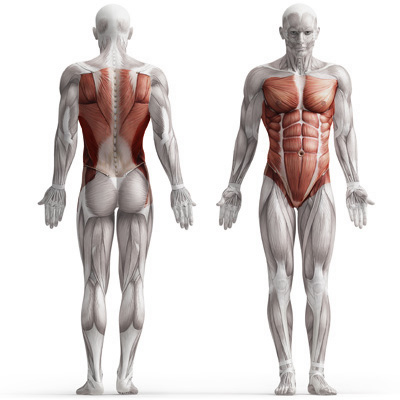UHN’s hcmfitness.ca Website
Terms of Use Agreement
Acceptance
It is important that you read all of the following terms and conditions carefully. This Terms of Use Agreement (“Agreement”) is a legal agreement between you and University Health Network (“UHN”) which is the owner and operator of the Website. This Agreement outlines the terms and conditions under which you may access and use the Website and all written and other materials displayed or made available through the Website such as videos, audio clips, articles, pictures, illustrations, links to third party sites, etc. By using the Website, you accept to be bound by the terms and conditions of this Agreement. If you do not accept these terms and conditions, you must not use the Website. UHN may revise this Agreement at any time without telling you before. Using the Website after UHN makes changes to the terms means that you agree to and accept the revised terms.
This is a Canadian Website. Its content is intended for Canadian residents only.
The Website is not directed toward children under the age of 18.
No medical advice
The information presented on this website is in no way intended as medical advice or as a substitute for medical treatment. this information should only be used in conjunction with the guidance and care of your physician. consult your physician before beginning any diet, nutrition, exercise or fitness plan offered through the website. Your physician should allow for proper follow-up visits and individualize your diet, nutrition, exercise or fitness plan as appropriate. Nothing stated or presented on the website is intended to be a substitute for professional medical advice, diagnosis, or treatment. Always seek the advice of your physician or other qualified health care provider if you have any questions regarding a medical condition, your diet, nutritional supplements, an exercise regimen, or any other matter related to your health and well-being.
Health and medical concerns
This Website includes information and instruction relating to exercise and fitness. Before participating in any exercise program or fitness plan that may be described or made accessible in or through the Website, we strongly recommend that you consult with a physician or other healthcare provider. Not all exercises are suitable for everyone. As with any exercise program, if at any point during your workout you begin to feel faint, dizzy, or have physical discomfort, you should stop immediately. You are responsible for exercising within your limits and seeking medical advice and attention as appropriate. UHN and affiliates are not responsible for any injuries that result from participating in the exercises shown in this program.
You should never disregard medical advice or delay seeking it because of something you have seen on the Website. The Website should not be used in lieu of advice given by qualified medical professionals such as your doctor or registered dietitian. It is important that the Website is used only in conjunction with qualified medical guidance. If you know or suspect that you may be pregnant, have an eating disorder, have diabetes, or have any other physical or medical condition, it is imperative that you seek the advice of your doctor prior to starting any of the exercise programs found on the Website.
If you experience any discomfort or pain during an exercise routine you must immediately cease the activity and seek the assistance of a physician.
Voluntary assumption of risk
I acknowledge that my participation in the exercise program carries with it certain inherent risks that cannot be eliminated regardless of the care taken to avoid injuries. I understand that the specific risks can and do vary from one activity to another and that these risks range from: (a) minor injuries such as scratches, bruises, and sprains, to (b) major injuries such as eye injury or loss of sight, joint or back injuries, disfigurement, heart attacks, broken bones, torn ligaments and concussions to (c) catastrophic injuries including paralysis and death.
Website and content provided on an as-is basis and at your own risk
UHN provides the Website on an “as is” and “as available” basis. You therefore use the Website at your own risk. UHN expressly disclaims any and all warranties of any kind, whether express or implied, including, but not limited to the implied warranties of merchantability, fitness for a particular purpose, non-infringement, and any other warranty that might arise under any law. UHN assumes no liability for or relating to the delay, failure, interruption or corruption of any data or other information transmitted in connection with use of this Website.
External websites linked from the Website
Any websites linked to from the UHN Website are created by organizations outside UHN. Those organizations are responsible for the information contained within their sites. UHN is not responsible for the content of linked third-party sites or third-party advertisements and does not make any representations regarding their content or accuracy. Your use of third-party websites is entirely at your own risk and subject to the terms and conditions of use for such sites. Any specific comments regarding these sites should be directed to that individual site.
I, on behalf of myself, heirs, assigns, personal representatives and estate hereby release, forever discharge, indemnify, defend and covenant not to sue, UHN and its directors, employees, agents, advisors, contractors, consultants, or other representatives and their respective successors and assigns, (the “released parties”) from and against any and all claims, demands, liabilities, costs, or expenses whatsoever, including, without limitation, legal fees and disbursements, resulting directly or indirectly from (I) my breach of any of the terms and conditions of this agreement; or (II) my access to, use of, misuse of, reliance upon, or inability to access or use, the website or the website content.
General Legal Terms and Conditions:
Use prohibited where contrary to law
Use of UHN’s Website is unauthorized in any jurisdiction where the Website or any of the content may violate any laws or regulations. You agree not to access or use UHN’s Website in such jurisdictions. You agree that you are responsible for compliance with all applicable laws or regulations. Any contravention of this provision (or any provision of this Agreement) is entirely at your own risk.
Governing law and jurisdiction
UHN’s Website is operated by UHN from its offices within the Province of Ontario, Canada. You agree that all matters relating to this Agreement, or your access or use of UHN’s Website and its content shall be governed by the laws of the Province of Ontario and the laws of Canada applicable therein, without regard to conflict of laws principles. You agree and hereby submit to the exclusive jurisdiction of the courts of the City of Toronto, Province of Ontario with respect to all matters relating to your access and use of the Website and the Website content as well as any dispute that may arise therefrom. To the extent permitted by law, you irrevocable waive any right to a trial by jury.
Limitation of Liability
In no event shall UHN, its physicians, other qualified health care providers, officers, directors, employees, contractors, agents, licensors, or their respective successors and assigns be liable for any damages of any kind, including without limitation, any direct, special, indirect, punitive, incidental or consequential damages (and including without limitation any loss or damages in the nature of or relating to medical injury, personal injury, wrongful death, improper diagnosis, inaccurate information, improper treatment or any other loss incurred in connection with your use, misuse or reliance upon the Website or the content, or your inability to use the Website, regardless of the cause and whether arising in contract (including fundamental breach), tort (including negligence), or otherwise. The foregoing limitation shall apply even if UHN knew of or ought to have known of the possibility of such damages.
Use of content
UHN authorizes you to view or download a single copy of the material on the UHN Website solely for your personal, non-commercial use if you include the following copyright notice: “Copyright © 2014 University Health Network. All rights reserved.” Any other use of the material is strictly prohibited without UHN’s prior written permission and the permission of the applicable rights holder(s). If you violate any of these Terms and Conditions, your permission to use the content automatically terminates and you must immediately destroy any copies you have made of any portion of the content. You must also abide by any additional requirements governing the use of any special content that may be set out in the Website.
No waiver
UHN’s failure to act with respect to a breach by you or others of this Agreement does not waive UHN’s right to act with respect to subsequent or similar breaches. This Agreement sets forth the entire understanding and agreement between you and UHN with respect to the use of the Website.
Contact Information
If you have any questions about these Terms and Conditions of Use or the Website in general, please contact us at: Sarah Harris, Holistic Lifestyle Coach email: wellnessdesign@mac.com
Thank you for visiting the Website. We hope you find your visit to be worthwhile and useful.









